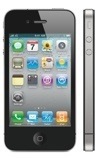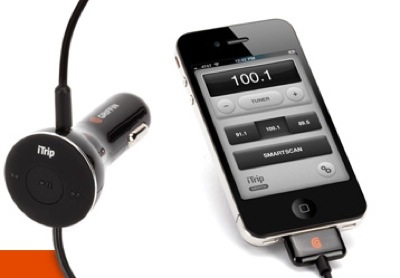An Apple patent (number 20100284525) has appeared at the US Patent & Trademark Office that shows that future Apple mobile devices may sport a microphone array for improved sound capture.
The patent is for the transfer of multiple microphone signals to an audio host device. The invention involves an audio communications host device has a communications network interface, digitizing circuitry, and a headphone jack. A demultiplexer has an input coupled to receive a signal from a pin of the headphone jack, and multiple outputs coupled to inputs of the digitizing circuitry, respectively. An uplink audio processor receives digitized microphone signals from multiple outputs of the digitizing circuitry, and in response delivers an uplink signal to the communications network interface. The uplink signal contains audio from one or more of the digitized microphone signals. Other embodiments are also described and claimed. The inventors are Wendell B. Sander and David John Tupman.
Here’s Apple’s background and summary of the invention: “Mobile smart phones are increasingly being used in situations that call for hands-free communication. As a result, mobile phone users are now using headsets with cables that can be plugged into a headphone jack of the mobile phone. Typical headset designs have a single microphone that is located as near the user’s mouth as possible, when the headset is worn, e.g. at the tip of a microphone boom or attached to one of the cables that connect to an earphone of the headset.
“This positioning however is generally not as good as being very close the user’s mouth, often causing a decrease in the signal to noise ratio (SNR) of the speech signal that has been captured or picked up by the microphone. Coupled with the fact that most users often have conversations using their mobile phones in noisy environments, the fidelity of the captured speech signal is often very poor.
“One way to improve the performance of sound capture by the headset during a two-way communications or phone call application is to capture the near end user’s speech using multiple microphones. This arrangement is also referred to as a microphone array. The processing of microphone array signals improves the SNR of the resulting microphone signal, by spatially filtering the ambient sound field around the near end user. In other words, the array is “pointed” toward the signal of interest, by emphasizing contributions from the better placed microphones while deemphasizing those of the poorly placed microphones. Microphone array processing may also be used in conjunction with a noise cancellation algorithm to more effectively reduce the ambient noise that is captured by the microphones.
“Headsets with built-in microphone arrays may also perform better when being used for media playback applications, e.g. while the user is listening to a locally playing MP3 music file, or streaming video over the Internet. In that case, microphone array processing may enhance the noise cancellation algorithm to alleviate the impact of acoustic leakage of ambient noise into an earphone of the headset.
“Microphone array processing may be performed within the so-called host device, e.g. the mobile phone handset unit or the digital media player device, by taking advantage of available central processing unit (CPU) data processing power within the host device. To deliver the microphone signals from the headset to the host device, a multi-channel audio codec with a digital microphone interface may be used. The digital microphone interface permits the connection of digital microphones in the headset, to a codec chip within the host device, via a multi-pin cable interface where each pin carries either a single microphone data channel or a reference clock signal (the latter being used for timing purposes to ensure correct sampling of the microphone data signal received by the host device).
“An embodiment of the invention is a technique for transferring multiple, analog microphone signals over a single-wire interface to an audio host device, such as a smart phone, an MP3 player device, or a desktop or laptop personal computer. On the headset side, a microphone signal transfer circuit includes a multiplexer having multiple inputs to receive multiple, analog microphone signals, respectively. An output of the multiplexer is coupled to the input of a voltage to current converter. An output of the voltage current converter is in turn coupled to a single, microphone signal line that runs to the host side. Power supply current may be provided to the multiplexer and the voltage to current converter, by a voltage regulator that is running off the microphone signal line.
“In other words, the microphone signal line not only transfers the microphone signal data from the headset side, but also provides DC current from the host side, to supply power for running the microphone signal transfer circuit. The multiplexer rapidly switches its output from being connected with one of its inputs to another, in accordance with a sufficiently high reference frequency, e.g. at least 10 kHz. The output signal of the multiplexer thus contains the sampled multiple microphone signals. The output voltage signal is converted into a corresponding sequence of current variations on the microphone signal line.
“The current variations on the microphone signal line are then detected at the host side as voltage variations, using a demultiplexer whose input is connected to the microphone signal line and whose outputs deliver samples of the microphone signals, respectively. To do so, the demultiplexer may switch its input, from being connected with one of its outputs to another one of its outputs, in accordance with the same reference frequency that was used by the multiplexer in the headset side.
“The analog outputs of the demultiplexer are then digitized and fed to an audio processor. The latter may perform microphone array processing upon the digitized microphone signals. Depending on the application running in the host device, the audio processor may produce for example an uplink signal that is then fed to a communications network interface of the host device (e.g., a telephony application), or an audio signal that represents playback of a digital media file (e.g., a local MP3 player application or an Internet streaming video player).
“The above summary does not include an exhaustive list of all aspects of the present invention. It is contemplated that the invention includes all systems and methods that can be practiced from all suitable combinations of the various aspects summarized above, as well as those disclosed in the Detailed Description below and particularly pointed out in the claims filed with the application. Such combinations have particular advantages not specifically recited in the above summary.”


![[MD1] BeOS For Intel PCs](https://www.mactech.com/wp-content/themes/Extra/images/post-format-thumb-text.svg)
